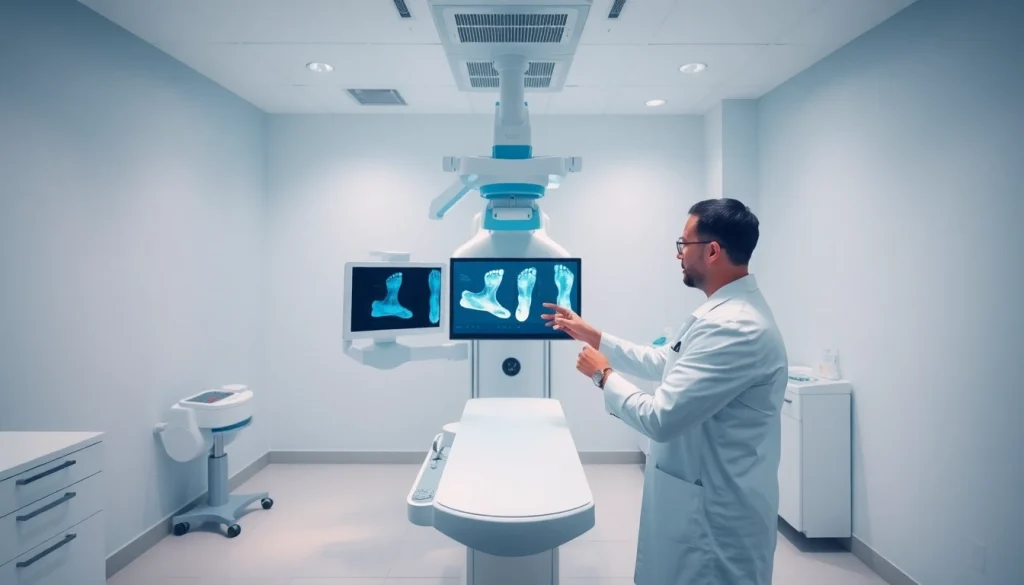Understanding the Importance of a Podiatry X-Ray System
A Podiatry x-ray system is a vital tool in the field of podiatry, serving as an essential diagnostic device that helps clinicians gain a clearer view of the foot and ankle’s internal structures. The ability to visualize bones, soft tissues, and any potential abnormalities is instrumental in formulating effective treatment plans for patients. By leveraging x-ray technology, podiatrists can enhance patient outcomes, reduce recovery times, and improve overall care quality.
What is a Podiatry X-Ray System?
A podiatry x-ray system consists of specialized imaging equipment tailored for examining the foot and ankle regions. Unlike general x-ray machines, these systems are designed with the specific anatomical nuances of podiatric care in mind, featuring advanced imaging capabilities and ergonomic designs that streamline the diagnostic process. Common forms include digital radiography systems that provide higher image quality and reduce radiation exposure.
Benefits for Patient Care
The integration of a podiatry x-ray system into a practice brings numerous benefits:
- Enhanced Diagnosis: X-rays allow for precise identification of fractures, arthritis, and bone deformities, which are critical for effective treatment.
- Non-Invasive: The imaging process is quick and non-invasive, minimizing discomfort for patients.
- Immediate Results: With digital x-ray systems, results can often be viewed instantly, facilitating prompt decision-making.
- Better Treatment Planning: Armed with detailed images, podiatrists can devise targeted treatment plans that address the specific needs of each patient.
Common Conditions Diagnosed with X-Rays
Several podiatric conditions can be effectively diagnosed via x-ray, including:
- Fractures: Such as stress fractures in athletes or trauma-related injuries.
- Arthritis: With x-rays helping to reveal joint degeneration and changes.
- Deformities: Including bunions, hammertoes, and other structural anomalies.
- Infections: Bone infections such as osteomyelitis can be traced through specific radiologic indicators.
Choosing the Right Podiatry X-Ray System
Key Features to Consider
Selecting the right podiatry x-ray system requires consideration of various features:
- Image Quality: Look for systems that produce high-resolution images to enhance diagnostic accuracy.
- Footprint: The size of the x-ray unit is important, especially for practices with limited space.
- Ease of Use: Systems should be user-friendly to minimize training time and streamline workflows.
- Price and Warranty: Ensure competitive pricing and warranty options that safeguard your investment.
Comparing Different Models
When comparing different models, it helps to assess performance, durability, and manufacturer support:
- Performance Reviews: Reading reviews and testimonials from other podiatrists can offer insights into real-world effectiveness.
- Durability: Investigate the materials and construction quality to determine the lifespan of the unit.
- Support Services: Check whether the manufacturer provides robust customer support, including training and maintenance resources.
Cost Considerations and Budgeting
Budgeting for a podiatry x-ray system involves initial acquisition costs and ongoing expenses:
- Initial Costs: These may include the price of the unit, installation, and any additional software required.
- Operational Expenses: Consider costs for maintenance, calibration, and any replacement parts over time.
- Financing Options: Many manufacturers offer leasing options or financing plans to help spread the cost over time.
Integrating the Podiatry X-Ray System into Your Practice
Staff Training and Preparation
Successful integration of a podiatry x-ray system relies heavily on staff training:
- Comprehensive Training: Provide hands-on training sessions for all staff who will interact with the x-ray machine.
- Safety Protocols: Ensure that all users are well-versed in safety protocols to minimize radiation exposure.
- Ongoing Education: Stay updated with technology advancements to maximize the utility of the system.
Workflow Optimization Tips
Optimizing workflow around the new x-ray system can enhance efficiency:
- Streamlined Appointment Schedules: Incorporate imaging time into appointment scheduling to minimize patient wait times.
- Cross-Department Coordination: Ensure that communication between departments is seamless, especially when sharing imaging results with other specialists.
- Regular Feedback Sessions: Conduct sessions where staff can share insights on efficiency improvements and patient interactions.
Patient Communication Strategies
Clear communication with patients regarding x-ray procedures can elevate their experience:
- Pre-Procedure Education: Inform patients about what to expect, reducing anxiety before the procedure.
- Post-Procedure Follow-Up: Keep patients informed about next steps based on their x-ray results.
- Use Visual Aids: Employ diagrams and images to explain x-ray findings effectively.
Maintenance and Safety of Podiatry X-Ray Systems
Routine Maintenance Practices
Regular maintenance is crucial to keep x-ray systems functioning optimally:
- Scheduled Servicing: Develop a schedule for routine check-ups and servicing, based on manufacturer recommendations.
- Cleaning Protocols: Ensure the x-ray machine is cleaned and sanitized regularly to maintain equipment hygiene.
- Software Updates: Keep all associated software up-to-date to enhance functionality and security.
Understanding Safety Protocols
Safety should be a top priority when operating podiatry x-ray systems:
- Radiation Safety: Implement protocols for minimizing radiation exposure to patients and staff, such as lead aprons and barriers.
- Emergency Procedures: Prepare clear procedures for emergencies related to x-ray operations or patient reactions.
- Regular Safety Drills: Conduct drills to ensure that all staff members are familiar with safety measures and emergency responses.
What to Do in Case of Equipment Failure
In the event of equipment failure, it is essential to have a plan in place:
- Immediate Assessment: Evaluate the issue promptly to determine if it can be resolved quickly or if professional help is needed.
- Documentation: Maintain a detailed log of the incident for future reference and to assist in troubleshooting.
- Manufacturer Support: Always reach out to the manufacturer or a certified technician for assistance to avoid further damage.
Future Trends in Podiatry Imaging Technologies
Emerging Technologies in X-Ray Systems
The world of podiatry imaging is rapidly evolving, with several emerging technologies shaping the future:
- 3D Imaging: Advanced 3D imaging systems provide a comprehensive view of foot and ankle structures, further enhancing diagnostic accuracy.
- Wireless Imaging: Wireless technology allows for flexibility in imaging locations, enabling more dynamic and patient-friendly environments.
- Enhanced Imaging Software: Continued developments in software will enable better image analysis and tracking of patient progress.
Integrating AI in Podiatry Imaging
Artificial intelligence is set to revolutionize podiatric diagnostics:
- Automated Analysis: AI technologies can process x-ray images efficiently, pinpointing areas of concern that need further evaluation by a specialist.
- Predictive Modeling: AI can assist in predicting patient outcomes based on historical data, enabling personalized treatment plans.
- Clinical Decision Support: Integrating AI into the workflow can provide suggestions for treatment based on the x-ray results.
Preparing for Future Developments
To stay ahead in podiatric care, practices must embrace adaptability:
- Continuous Education: Encourage ongoing training and education for staff to stay updated with emerging technologies.
- Investment in Technology: Allocate budget for the acquisition of new technologies as they become available to maintain competitive care standards.
- Feedback Mechanisms: Implement systems for collecting feedback on new technologies and their effectiveness in clinical settings.








